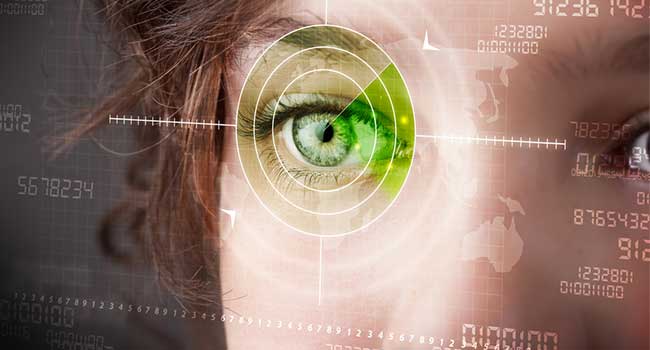
Iris Readers Enhance Security of Access Control Systems
- By Mark Clifton
- May 23, 2016
A new generation of iris reader technology and products is about to change the landscape for access control. These new solutions will dissipate preconceived notions about the price, performance, and business potential for iris readers. Once primarily implemented only for high-security applications, new iris reader solutions provide a viable alternative to the most common access control and time-and-attendance devices – card readers and proximity devices – with far superior accuracy, overall security and cost-efficiency.
Many, if not most, access control systems for retail and business facilities today use card readers to enable access. And herein lies a significant difference between card readers/proximity systems and biometric iris reader systems. The former is more about access than control while the latter optimizes control based on biometric identity.
Control Through Authentication and Security
In common access control systems, access is authorized either by the reader/controller or by the reader/server based on presentation of a pre-programmed access card by the individual. Neither decision is dependent upon any type of identity recognition. In a real sense, card-based systems are using the card as confirmation of the identity of the person carrying the card. However, because cards can be stolen, loaned, lost or duplicated, that link is both tenuous and vulnerable. Without physical identity verification, the reader does not have the ability to confirm that the user is in fact the individual assigned to that card. Even two-factor authentication (i.e. access card plus PIN or password) can be defeated with readily available skimmers.
Iris recognition access control systems require authenticated identification before allowing access. Control is significantly improved because it is difficult if not impossible to falsify iris information. An iris cannot be shared or stolen, and iris readers cannot be fooled by makeup, hair or clothing changes. Some can even read through eyeglasses and can authenticate subjects in diverse weather conditions, outdoors or inside.
For the user, it’s as simple as taking a selfie. In the enrollment process a camera captures a detailed image of the iris and the system’s biometric software makes a template or 'map' of the person's iris pattern for storage in the system. To verify identity later, an individual simply 'looks into' the iris reader from a comfortable distance, and the system compares the patterns in the individual's iris against the templates stored in the database. If there's a match, the individual’s identity is verified. And because no contact with the camera is required, either for enrollment or authentication, wear and tear on the cameras and contamination issues are greatly reduced.
It has been said that using lower-accuracy access systems such as cards/readers for facility access is the equivalent of locking a car door – easily compromised. Stolen cards can be duplicated or the information contained in the card can be used to hack into other areas of a facility. These vulnerabilities can lead to a less secure environment and put the safety of employees, visitors and assets at risk.
Iris readers can overcome many of these concerns and help ensure a higher level of security. There are no cards to be lost, loaned or duplicated and, as previously stated, iris information cannot be falsified.
Improved technologies have made iris reader systems much more available at competitive costs and new form factors are rapidly increasing its reach. Iris biometric-embedded tablets, for instance, combine the accuracy and convenience of iris recognition with the functionality and customization of a mobile computing platform for increased security levels. Other new systems on the market offer high speed, making it possible for users to simply walk through a checkpoint without stopping, in addition to mobile functionality.
Benefits Beyond Security
The accuracy and identification authentication provided by iris recognition systems can also have benefits beyond security purposes. Time and attendance, inventory control, company messaging as well as additional customizable applications are just a few examples. Consider the efficiency and productivity gains for a workforce when iris recognition is used for time and attendance. In hourly and shift-based businesses such as retail, hospitality and manufacturing, time and attendance becomes more accurate (no more “buddy punching”). It also becomes more convenient, eliminating all the extra steps between punching in, recording hours, processing payroll and performing analytics. Along with new form factors, technology advances and improved accuracy, the range of applications is bound to increase.
Whether used in security or business applications, iris readers are proving cost effective – particularly from a lifecycle perspective. There are no cards to be replaced when worn out or lost; no RFID blocking sleeves are necessary to prevent hacking; and operations can be streamlined through reduced time and labor. Some systems allow scanning of up to 30 people per minute from a distance of several feet. By comparison, expected throughput with high end hand or fingerprint scanners is 10-15 people per minute.
Hackers, thieves and criminals will almost always look for the path of least resistance or find the loopholes. By deploying high-security iris recognition readers, organizations can make a meaningful difference in mitigating risk.